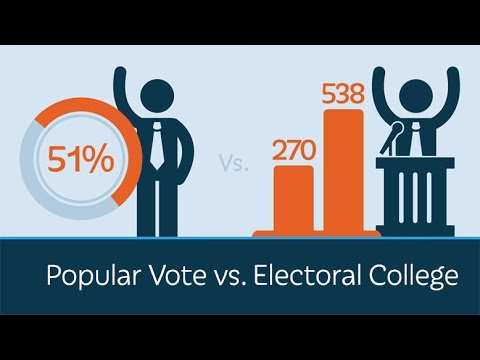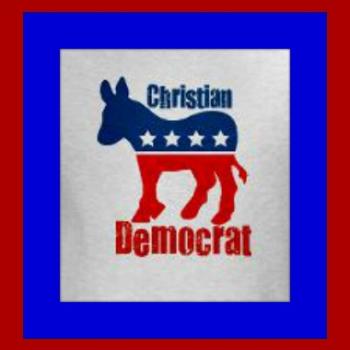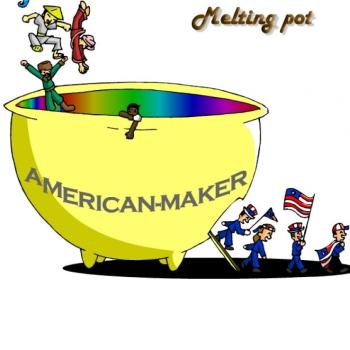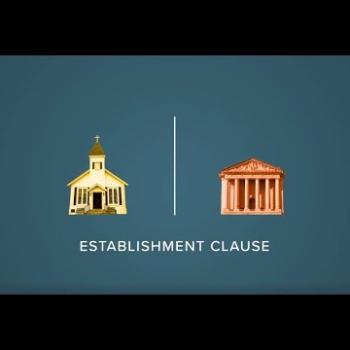
Every election in the United States is done by popular vote, except one. The election of the only person who represents every American, the president, is done in a very different way. Your vote, and mine, for president is tallied up with those from others in our state. The winner, in almost all cases, takes all of our state’s electoral votes. All of the 100 million plus votes cast in American presidential elections are boiled down to the votes of 538 people chosen for the Electoral College.
It sounds awfully convoluted on the surface. The founding fathers put this system in place as a result of compromises made to appease small states and to, supposedly, keep them from being dominated by the big states. There is a darker aspect to this part of the story too. The small states asking for the compromise were, for the most part, southern slave holding states who wanted to make sure their interests were protected. This was in conjunction with the dubious “3/5 Compromise” which only counted 3 of every 5 slaves into the population figures.
Another reason for the complicated elector process was that the founders were concerned that the general populous in the late 18th Century was not well enough informed to make an educated choice with their vote. After all, the people of the 1780s weren’t blessed with the wealth of high quality information we find on social media today…cough…
The Electoral College has survived these many years, in part, because it usually works out the same as the popular vote. The old adage, if it ain’t broke, don’t fix it seemed sufficient. For the first 200+ years of its existence, the electoral vote matched the popular vote in all but 3 elections. But now, the anomaly of discrepancy has happened twice more in the last 16 years, which has many calling to scrap the Electoral College.
Proponents of the Electoral College claim it is still needed for the same reason, to protect the voice of the small rural states.
Here is the trouble with that. The Electoral College over-inflates the power of the small, rural states to a fairly astounding degree. I am quoting here from an article by William Kimberling in which he weighs the pros and cons of the Electoral College. The data he uses is from 1988, but the revelation it makes is just as relevant today.
“The distribution of Electoral votes in the College tends to over-represent people in rural States. This is because the number of Electors for each State is determined by the number of members it has in the House (which more or less reflects the State’s population size) plus the number of members it has in the Senate (which is always two regardless of the State’s population). The result is that in 1988, for example, the combined voting age population (3,119,000) of the seven least populous jurisdiction of Alaska, Delaware, the District of Columbia, North Dakota, South Dakota, Vermont, and Wyoming carried the same voting strength in the Electoral College (21 Electoral votes) as the 9,614,000 persons of voting age in the State of Florida. Each Floridian’s potential vote, then, carried about one third the weight of a potential vote in the other States listed.”
I understood before that the math of the Electoral College did not add up, but to see it as clearly as Mr. Kimberling lays it out above was astounding to me. People who live in small states have a vote that can potentially carry up to three times the mathematical weight as someone living in a big state. I once was on the fence about the Electoral College but with math like that, I can no longer defend it. How could I?
Here is a proposal to keep the Electoral College but make it equitable. What if we split each state’s electoral votes in a way that reflects the popular vote of that state?
Example: Say a state has 10 electoral votes (nice round number that even a history teacher can work with). Let’s say Candidate A gets 51% of the vote in that state and Candidate B gets 49% of the vote. Why not give Candidate A 5.1 electoral votes and Candidate B 4.9 electoral votes? Then add up all the states and the first one to 270 wins. The people who sell red state and blue state maps wouldn’t like it, but I would. Wouldn’t you?
I came up with an analogy that I believe sums up my stance on the Electoral College vs. popular vote argument. If electoral votes were stock shares and popular votes were dollars, we would have changed this system a long time ago.
But here is the thing, popular votes are more crucial than dollars. They are your voice.












